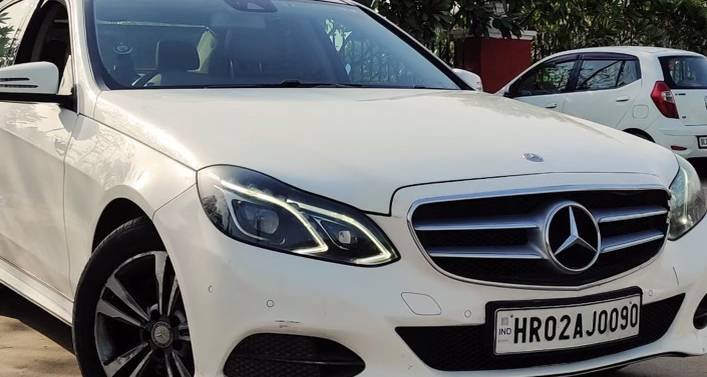As it was manufactured after taking inspiration from the mighty W124, the Mercedes W212 got back most of the lost reputation for the brand. With new technology, the car had better performance and an overall better ownership experience for its owners.
Now, it has been more than ten years since the car first launched. And as the vehicle ages, it is bound to have some hiccups now and then. You can prevent such situations by performing preventive maintenance, but not all people take such good care.
And that leads me to write this article on a common occurrence of high mileage Mercedes W212; power loss.
The car would not climb speed spiritedly and may or may not throw codes. So, here is what could be the possible culprit.
Fuel contamination
The Mercedes W212 also came in a diesel variant and a lot of people opted for its sheer torque and great fuel efficiency. It is all good to have effortless drive-ability unless you don’t have any power left.
The two greatest problems with diesel are the high sulfur content and contaminants. The former is pretty much sorted with ultra-low sulfur diesel (ULSD). But the latter still bugs a lot of owners.
You may have changed the diesel filter in the engine bay and may not doubt that it is a fuel contamination problem, but here is a good reason that it might be.
The fuel in the fuel tank gets filtered at the fuel screen and then at the fuel pump as well. But what happens if both of the filtration aids are compromised? Since these parts are located inside the fuel tank, they never get serviced, especially in the case of a used car.
Fuel contamination first happens at the refineries, then at eh fuel bunk and lastly at the fuel tank when the owner decides to add some miracle additive.
To find out whether your Mercedes W212 has a fuel contamination problem, look at the fuel tank cap. Does it look clean or does it have colored gunk on its rim? If it is not visible there and you do not have any fuel pump change proof, then it is time to take a look at the strainer. Have a qualified mechanic do this job as it requires fuel tank removal.
Getting the tank cleaned requires an expert who knows his chemicals, so it is always recommended to change the whole fuel tank.
With the gunk out and new filters (and maybe a pump) and screen, the fuel should flow freely and leave the car happier than ever.
Clogged Injectors
Happens mostly on high mileage cars or the ones driven around shady fuel pumps. It is a part of fuel contamination theory, but since this part is located in the engine bay, it needs its subheading.
Fuel injectors spray diesel into the combustion chamber at pressure as high as 30,000 psi (your car tire is filled at about 35 psi). And when this pressure goes down, the fuel would not atomize properly resulting in improper combustion.
Injectors have their little filter attached to them. It takes a year to clog them (if other filters are not changed in time). The drop in performance is quasi-static. And so, the drive only notices the loss of power when the injectors are almost fully clogged spraying very little fuel in the cylinder.
It requires a heavy apparatus to check these for clogs. So, take it to a competent mechanic to get them checked. Most likely, he/she would clean them and the power loss problem would go away.
Exhaust Gas Re-circulation valve malfunction
It is not a common sight on diesel Mercedes W212 to get a malfunctioning EGR valve. This device is present in almost all modern diesel engines to minimize pollution.
The EGR valve works flawlessly on cars taking frequent expressway trips. The ones driven sedately around the city get the valve clogged with carbon deposit. A clogged valve would not open or close and may get stuck in one of the positions.
The power loss scenario occurs when the valve is stuck open. The excess amount of exhaust in the combustion deprives the engine of combustible oxygen. This disturbs the air/fuel ratio and the car does not run well. Another reason is the big vacuum leak that the open EGR valve becomes.
Some other symptoms would include car stalling at idle and excessive black smoke out of the tail pipe.
Get the EGR valve and its solenoid controller checked by a competent mechanic. If the valve is the culprit, see if it can be cleaned. If not, then replace it.
Clogged Diesel Particulate Filter (DPF)
Along with an EGR valve, modern diesel engines have a Diesel Particulate Filter. The filter traps some exhaust soot to reduce pollution. Because it is small and has a limited capacity, it needs to burn the soot off to regenerate DPF.
The car, if had not been driven at high speed (expressway) for a long time, would have a clogged DPF. It is accompanied by a MIL – Malfunction Indicator Lamp or CEL – Check Engine Light. The car is limited to about 3k rpm and there is a considerable amount of power loss.
You can try driving the car on an expressway for about 40 minutes. it should regenerate the DPF. But if that does not help, you’d need to get the DPF cleaned professionally.
Turbocharger drag
The exhaust flow turns the turbocharger shaft. That’s the key. The exhaust gas, after a lot while, will leave a carbon deposit on the shaft. The shaft will not rotate as freely as it had been.
To check the drag on the turbo shaft, you can turn the intake side turbine with your hand. If it does not spin freely and makes a slight noise too, then you are looking at the culprit.
Note – Before you go and turn the turbine, make sure that the engine has not run for the past two-three hours. Turbo gets really hot when you drive the car. Proceed with caution.
A competent mechanic could rebuild it with new seals and bearing and bring back the power to your Mercedes W212.
And that is about it. I hope it helps. 🙂

